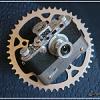A very hypothetical "what if?"
-
Recently Browsing 0 members
- No registered users viewing this page.
-
Similar Content
-
- 11 replies
- 736 views
-
- 54 replies
- 2,500 views
-
very nerdy
By brickftl,
- 1 reply
- 502 views
-
- 13 replies
- 3,304 views
-
What is this?
By Olaf_ZG,
- 11 replies
- 769 views
-




Recommended Posts
Join the conversation
You can post now and register later. If you have an account, sign in now to post with your account.
Note: Your post will require moderator approval before it will be visible.